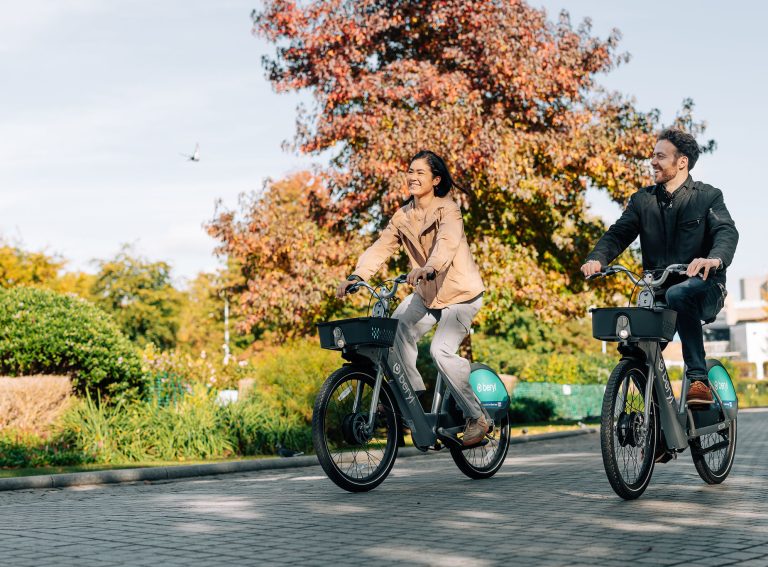Author: Erwann Le Page, Public Policy Director, Western Europe at TIER Mobility
On 2 April, 5% of Parisians voted ‘against’ shared e-scooters, a low-carbon means of transport used by 25% of Parisians every month. Why did the city choose to go through a referendum, and why does it stand alone in taking this stance?
A referendum sounds like a great idea. If there is an important issue, ask the people what they think and be guided by the wisdom of the crowd and adhere to democracy. In practice, how a referendum is designed can tell you a lot about which outcome is preferred. With Paris’ recent referendum on shared e-scooters, the first clue comes from how the question was put to the public. “Are you for or against shared e-scooters in Paris?”
Choosing the question for a referendum also means choosing the options that are on the table. With a binary for/against question there is no room for nuance or for establishing a way forward other than a continuation of the status quo or ending shared e-scooter services. There was no option for someone who was for the idea but only if there was stricter regulation, or for people who were ambivalent.
There was also some additional context missing, as the City of Paris had intended to launch a new, much more demanding tender process if the ‘pro’ e-scooter side had won. This was not reflected in the question, an important omission.
The freedom of movement
400,000 Parisians use a shared e-scooter every month, around a quarter of the population. Clearly a high proportion of the city’s residents found e-scooters to fill a transport need in their lives on a regular basis. However, the voice of under 100,000 citizens has been given precedence over the freedom provided by the shared e-scooter that so many more people have incorporated into their lives.
There is always an objection to change. For example, just this week a group of motorists parked in a new cycle lane in Clevedon to protest its installation. In the preceding years the City of Paris has listened to the objections, and where it was merited, worked with e-scooter operators to find a solution. As we move from a car-centric urban planning environment, this kind of push-back is to be expected. Is it not the job of elected representatives to look ahead to the future and manage these kinds of situations, guaranteeing our freedoms and the way in which they are exercised in respect of others? Should such a freedom be abolished when 92.5% of the people have not had their chance to give their say?
Such a low turn-out rate raises further questions about how the vote was run. Such a strong result (89%) ‘against’ shared e-scooter services when nearly a quarter of the city’s residents were using it on a monthly basis suggests that only the opponents mobilised. There is further data to back this up as a poll conducted just a few days before the vote found that 90% of those over 65 knew about the vote, while only 33% of those aged 18-24 were informed, despite all the efforts of the operators. The recent elections in France have also clearly shown that young people are a population group that regularly show low voter turnout. The conditions of this local referendum were not designed in a way that included them. The ban on online voting (which had already been introduced in Paris), the restriction to 21 polling stations across the capital on the day of the Paris Marathon and the ban on proxy voting could only reinforce the high level of abstention among young people already observed before.
The risky switch to private vehicles
The referendum is all the more perplexing because owners of privately owned e-scooters are not affected by this vote, despite the comparative lack of regulation around their use compared to shared e-scooters. The speed of the latter is lower (20 km/h as opposed to 25km/h for private vehicles); every ride on a shared e-scooter is insured (38% of users of private vehicles are not insured); geolocation of vehicles allows speed to be reduced to 10km/h in accident-prone areas (no geolocation); the identity of users is verified; all vehicles have number plates and users can be banned for anti-social riding behaviour.
The real problem behind shared e-scooters is the much broader problem of living together, of the incivility that still too often prevails in Paris, and of the dangers associated with all forms of mobility in the French capital. We elect representatives to organise life in the city. The road traffic regulations, the cycling plan, the reduction of space for the car, the cycling infrastructure, all these initiatives are undoubtedly going in the right direction. It is, however, difficult to understand how removing a popular and accessible and responsibly and safely operated mode of shared transport supports these aims.
Paris as a role model for other European cities?
Is the vote to ban in Paris now also leading to louder calls for a ban on rental e-scooters in many cities in Europe and around the globe? Highly unlikely, as we see that the vast majority of cities remain calm for the time being after the Paris vote and only want to introduce ‘stricter rules’ to at least make a concession to the e-scooter opponents. This is the right thing to do and the way forward for the shared micromobility industry. Major capitals like Washington, Madrid, Rome, London, Berlin and Vienna are all implementing policies supporting e-scooters as ways to reduce unnecessary car usage. Only with smart regulations can we tackle the existing issues and ensure that e-scooters and other forms of shared micromobility are well integrated in the urban transport mix.
The bigger problem is ignored
While e-scooters receive the lion’s share of opposition and criticism, the reasons for their introduction still remain. The number of cars registered across Europe increased by 9% between 2016 and 2021, and many urban areas have air pollution levels above WHO safe levels. The switch to electric vehicles is a slow process that will take many decades, and even then issues around congestion and the use of urban space remain. E-scooters alone won’t fix this, but increasing the number of alternatives to the car, and reducing the size of vehicles people use are steps on the right path. We have proven that we can work with local authorities to run safe and highly utilised e-scooter schemes around the world. Until then, we will continue to operate in Paris with our 5,000 e-bikes, as well as work closely with the other 80+ cities surrounding Paris.











